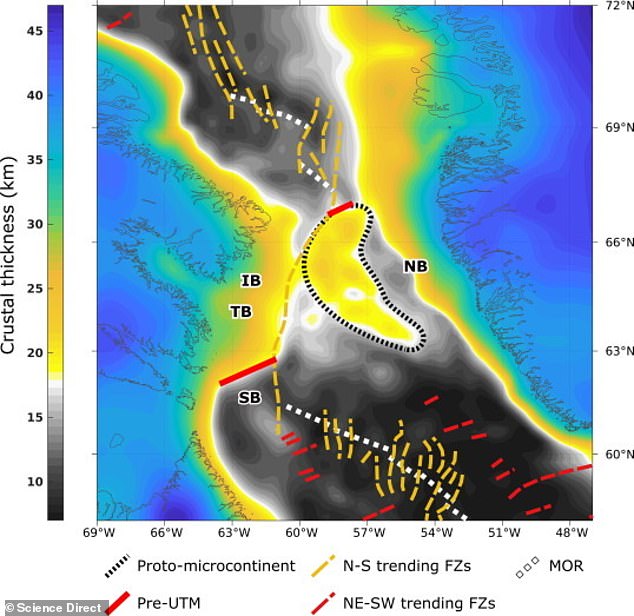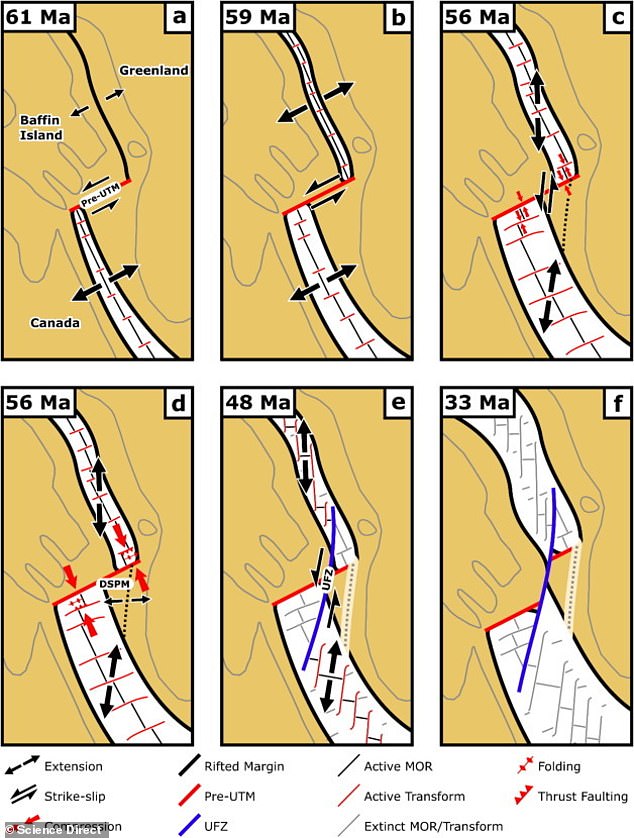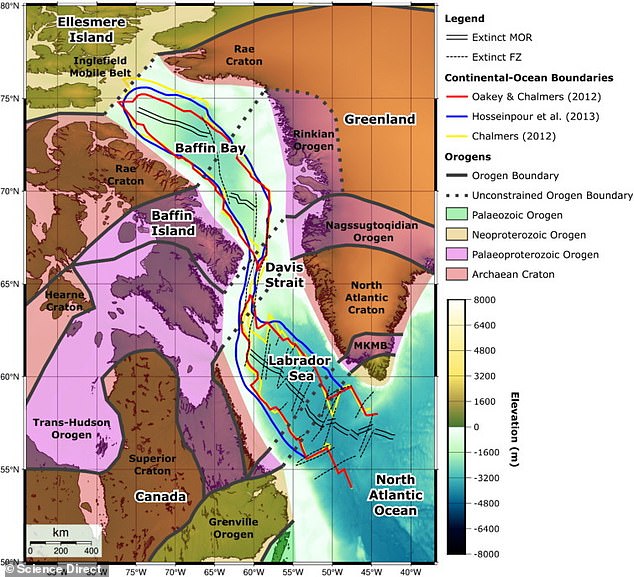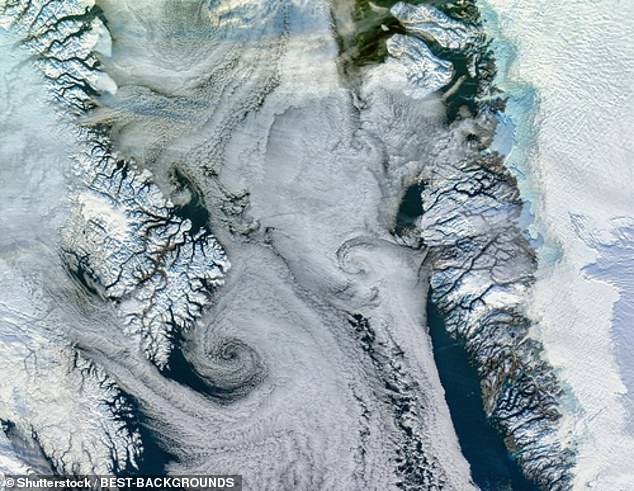Scientists have discovered a lost continent deep in the southern arm of the Arctic Ocean, which formed 60 million years ago.
Researchers at the University of Derby in the UK accidentally discovered a 400-kilometre-long land mass beneath the Davis Strait between Canada and Greenland while studying plate tectonics in the area.
The newly discovered Davis Strait protomicrocontinent, a tectonic block that broke off from a continent, was created through “a prolonged period of seafloor rifting and spreading between Greenland and North America,” the researchers explained.
The team suggested the protomicrocontinent broke away from Greenland after tectonics between the country and Canada split it in two about 118 million years ago.
Scientists have discovered a submerged microcontinent between Canada and Greenland that formed 60 million years ago. Pictured: Davis Strait, where the microcontinent was discovered

Researchers at the University of Derby were reconstructing plate tectonic movements in the area when they found a thick crust extending nearly 400 kilometres beneath Davis Strait. Pictured: The Davis Strait protomicrocontinent lies underwater in Davis Strait
“Microcontinent formation and crustal breakup are absolutely continuous phenomena; with every earthquake we could be moving towards the next microcontinent breakup,” said Dr Jordan Phethean. Physics.org.
“The goal of our work is to understand its formation well enough to be able to predict its future evolution.”
The researchers identified the new microcontinent using a combination of crustal thickness data obtained from gravity maps, seismic reflection data and plate tectonic models.
Gravity maps contain information on rock density and the depth and distribution of source rocks of anomalies.
The team focused on how the crustal anomaly formed by generating a reconstruction of tectonic movements lasting approximately 30 million years.
They described the protomicrocontinent as larger than other microcontinents, between 11 and 14 miles thick, and said understanding how it formed is vital to current science.
The average microcontinent is typically between three and 15 miles thick.
Mapping techniques tracked how seafloor motions had changed over millions of years and identified “an isolated terrain of relatively thick continental crust that broke away from Greenland during a recently recognized phase of extension (east to west) along western Greenland,” according to the study.
Researchers said the Davis Strait is one of the largest concentrations of known fault structures with well-defined changes in plate motion that could help understand how microcontinents form.
Protomicrocontinents are part of the continental lithosphere, which is a section of the Earth’s outer crust that is divided into several tectonic plates (slabs of rock).
There is a layer of semi-fluid rock located about 50 to 120 miles below the Earth’s surface that is heated and subsequently melted, causing the rock to flow.
The movement pushes the tectonic plates together, causing them to rub against each other for millions of years, resulting in earthquakes and volcanic explosions.
When this happens, the land mass will separate from the main continents and create its own protomicrocontinent.

Protomicrocontinents are part of the continental lithosphere, which is a section of the Earth’s outer crust that is divided into several tectonic plates (slabs of rock). Pictured: tectonic plates moving over millions of years

The research team used maps created from gravity and seismic reflection data that image the Earth’s subsurface using sound waves to determine the age and location of the faults. Pictured: Overview of the tectonic plates located in the Davis Strait
The initial breakup between Canada and Greenland began about 118 million years ago, but the seafloor did not begin to spread until 61 million years ago to create what is now known as Davis Strait.
After about three million years, scientists reported that seafloor spreading shifted from northeast to southwest to north to south, detaching the protomicrocontinent from the Davis Strait.
The change lasted for about 33 million years and only stopped when Greenland collided with Ellesmere Island to the north.
The researchers said they hope their findings can be used to understand how other protomicrocontinents around the world form, including the Jan Mayen microcontinent northeast of Iceland and the Gulden Draak Knoll off the coast of Western Australia.
“Microcontinent formation and breakup are absolutely continuous phenomena; with each earthquake we could be advancing towards the next microcontinent breakup,” Phethean said. Physics.org.
“The goal of our work is to understand its formation well enough to be able to predict its future evolution.”

